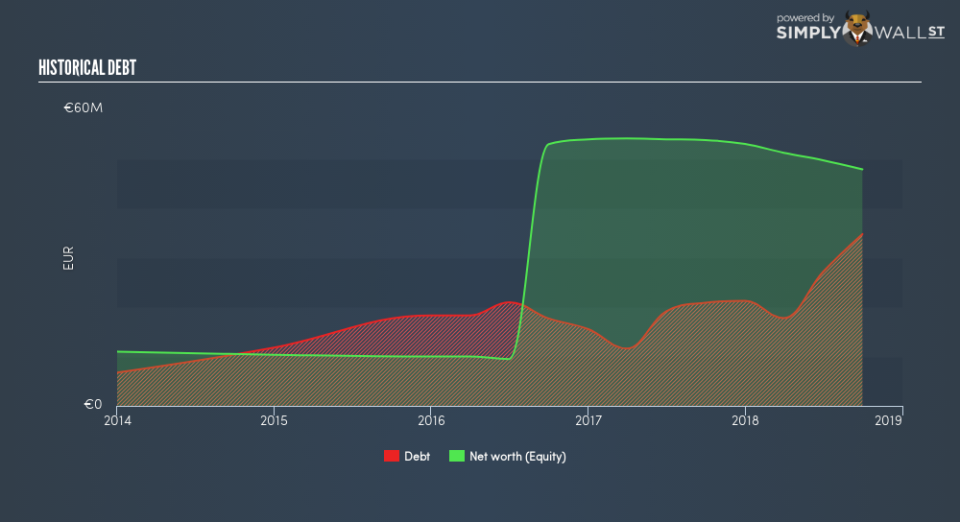Is va-Q-tec AG (FRA:VQT) A Financially Sound Company?

Want to participate in a short research study? Help shape the future of investing tools and you could win a $250 gift card!
While small-cap stocks, such as va-Q-tec AG (FRA:VQT) with its market cap of €83m, are popular for their explosive growth, investors should also be aware of their balance sheet to judge whether the company can survive a downturn. Since VQT is loss-making right now, it’s essential to understand the current state of its operations and pathway to profitability. Here are a few basic checks that are good enough to have a broad overview of the company’s financial strength. Though, given that I have not delve into the company-specifics, I suggest you dig deeper yourself into VQT here.
How does VQT’s operating cash flow stack up against its debt?
Over the past year, VQT has ramped up its debt from €21m to €35m – this includes long-term debt. With this rise in debt, VQT currently has €9.1m remaining in cash and short-term investments for investing into the business. Moving onto cash from operations, its small level of operating cash flow means calculating cash-to-debt wouldn’t be too useful, though these low levels of cash means that operational efficiency is worth a look. For this article’s sake, I won’t be looking at this today, but you can examine some of VQT’s operating efficiency ratios such as ROA here.
Can VQT pay its short-term liabilities?
Looking at VQT’s €22m in current liabilities, it seems that the business has been able to meet these obligations given the level of current assets of €29m, with a current ratio of 1.33x. Usually, for Machinery companies, this is a suitable ratio since there is a bit of a cash buffer without leaving too much capital in a low-return environment.
Can VQT service its debt comfortably?
With debt reaching 73% of equity, VQT may be thought of as relatively highly levered. This is not uncommon for a small-cap company given that debt tends to be lower-cost and at times, more accessible. But since VQT is currently unprofitable, sustainability of its current state of operations becomes a concern. Running high debt, while not yet making money, can be risky in unexpected downturns as liquidity may dry up, making it hard to operate.
Next Steps:
VQT’s high cash coverage means that, although its debt levels are high, the company is able to utilise its borrowings efficiently in order to generate cash flow. Since there is also no concerns around VQT’s liquidity needs, this may be its optimal capital structure for the time being. I admit this is a fairly basic analysis for VQT’s financial health. Other important fundamentals need to be considered alongside. I suggest you continue to research va-Q-tec to get a more holistic view of the small-cap by looking at:
Future Outlook: What are well-informed industry analysts predicting for VQT’s future growth? Take a look at our free research report of analyst consensus for VQT’s outlook.
Valuation: What is VQT worth today? Is the stock undervalued, even when its growth outlook is factored into its intrinsic value? The intrinsic value infographic in our free research report helps visualize whether VQT is currently mispriced by the market.
Other High-Performing Stocks: Are there other stocks that provide better prospects with proven track records? Explore our free list of these great stocks here.
To help readers see past the short term volatility of the financial market, we aim to bring you a long-term focused research analysis purely driven by fundamental data. Note that our analysis does not factor in the latest price-sensitive company announcements.
The author is an independent contributor and at the time of publication had no position in the stocks mentioned. For errors that warrant correction please contact the editor at editorial-team@simplywallst.com.

